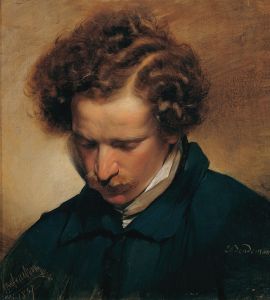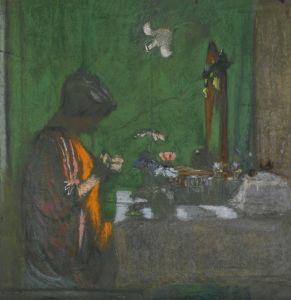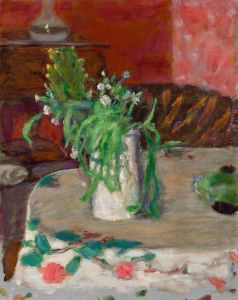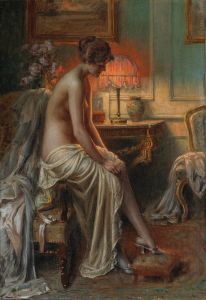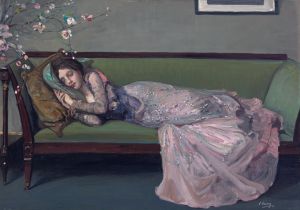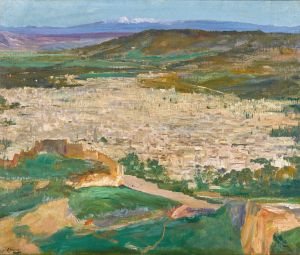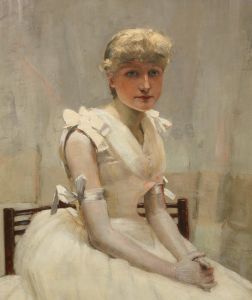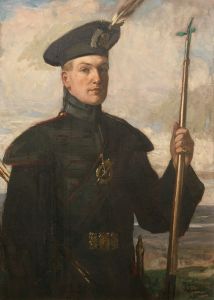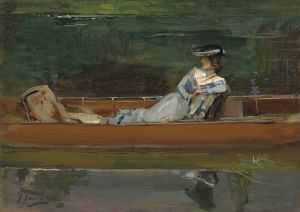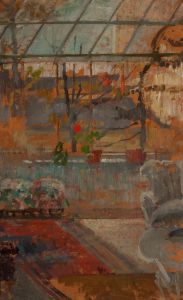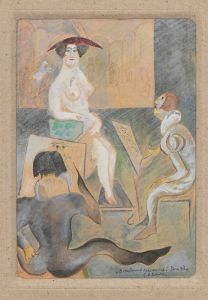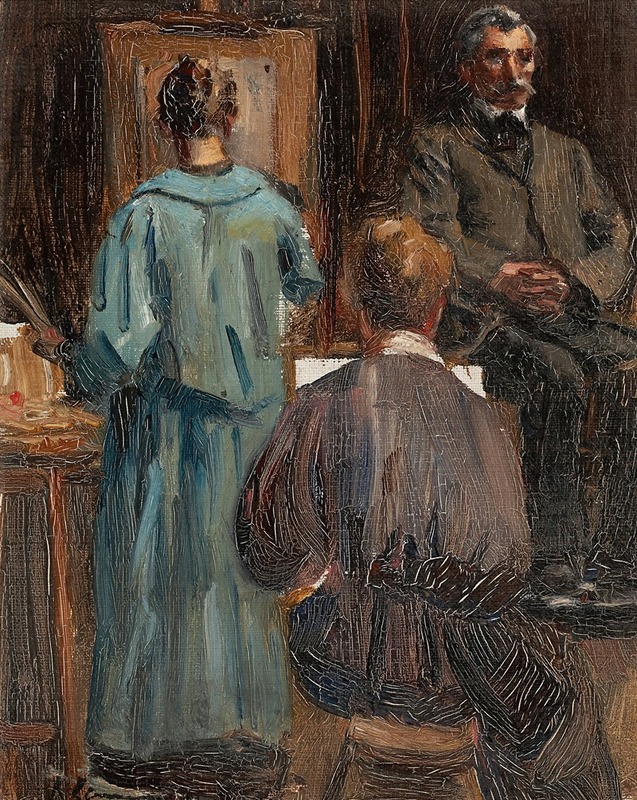
Interior of the Artist’s Studio
A hand-painted replica of Sir John Lavery’s masterpiece Interior of the Artist’s Studio, meticulously crafted by professional artists to capture the true essence of the original. Each piece is created with museum-quality canvas and rare mineral pigments, carefully painted by experienced artists with delicate brushstrokes and rich, layered colors to perfectly recreate the texture of the original artwork. Unlike machine-printed reproductions, this hand-painted version brings the painting to life, infused with the artist’s emotions and skill in every stroke. Whether for personal collection or home decoration, it instantly elevates the artistic atmosphere of any space.
"Interior of the Artist’s Studio" is a painting by the renowned Irish artist Sir John Lavery, who was a prominent figure in the late 19th and early 20th centuries. Lavery was known for his portraits and genre scenes, and his work often reflected the influences of the Impressionist movement, which he encountered during his time in Paris.
Sir John Lavery was born in Belfast in 1856 and later moved to Glasgow, where he began his formal art education. He continued his studies in London and Paris, where he was exposed to the works of the Impressionists, which significantly influenced his style. Lavery became a member of the Glasgow Boys, a group of artists who were instrumental in introducing Impressionism to Scotland.
"Interior of the Artist’s Studio" is a testament to Lavery's skill in capturing the nuances of light and atmosphere, a hallmark of his work. The painting depicts an intimate view of an artist's workspace, providing insight into the creative environment of the time. Lavery's use of light and shadow in the painting demonstrates his mastery of the Impressionist technique, creating a sense of depth and realism.
The composition of the painting is carefully arranged to draw the viewer's eye through the studio, highlighting various elements such as the artist's tools, canvases, and perhaps a glimpse of a work in progress. This attention to detail not only showcases Lavery's technical abilities but also offers a glimpse into the life and work of an artist during this period.
Lavery's career was marked by numerous successes, and he became a sought-after portrait artist, painting notable figures such as Winston Churchill and members of the British royal family. His work was well-received in both Europe and America, and he exhibited regularly at the Royal Academy in London.
In addition to his portraits, Lavery was known for his depictions of contemporary life, capturing scenes of leisure and society with a keen eye for detail and composition. His ability to convey the mood and atmosphere of a scene made his work particularly appealing to audiences of his time.
"Interior of the Artist’s Studio" is a reflection of Lavery's interest in the everyday life of artists and the spaces in which they worked. It provides a window into the artistic process and the environment that fosters creativity. The painting is an example of Lavery's broader body of work, which often explored themes of modernity and the changing world around him.
Sir John Lavery was knighted in 1918 for his contributions to art, and his legacy continues to be celebrated today. His works are held in numerous public and private collections, and he is remembered as one of the leading figures of his generation, bridging the gap between traditional and modern art.
Overall, "Interior of the Artist’s Studio" is a significant work that highlights Lavery's artistic talents and his ability to capture the essence of his subjects, whether they be people or places. The painting remains an important piece in understanding the development of modern art in the early 20th century.





